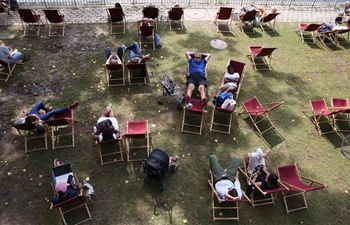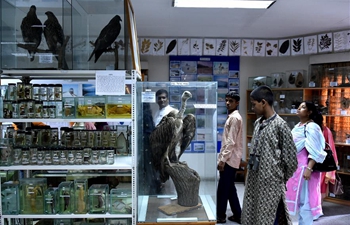by Eric J. Lyman
ROME, July 19 (Xinhua) -- Among the world's most visited cities, Italy's capital is in a battle to balance the needs of tourists and residents without endangering the cultural riches and traditional lifestyle that makes the city so popular with visitors.
Rome will attract more than 15 million tourists this year, according to Carlo Cafarotti, chief counselor for economic development with the City of Rome, who said that each year the number grows by another million visitors. That places Rome squarely within most lists of the world's 20 most visited cities -- a status that does not come without a price.
Tourists have broken pieces off of historic monuments and been caught carving their names into ancient structures. But even better behaved tourists have an impact through simple wear and tear on tourist sites.
Additionally, tourists' presence in the city requires officials to invest more money on already strained systems for roads, transport, water systems, and waste disposal. Rising demand for places for lodging and businesses space in the center of the city drives residents to the less expensive outskirts of the city, tearing at the social fabric of the historical parts of the city.
"In popular tourist destinations like Rome and other parts of Italy, the tourists can provide a constant grind that takes a toll on the very things that make people want to come to the city in the first place," Paola Fagioli, head of the tourism division within Legambiente, Italy's largest environmental lobby group, told Xinhua.
Rome already faces plenty of challenges, even without the growing number of tourist arrivals. The city's road system is widely criticized for poor maintenance. The public transport system is unreliable, and at least a dozen over-worked and poorly maintained city buses have burst into flames so far this year. In the summer of 2018, a long dry period forced the city to shut down public fountains, and so much trash lies uncollected in some parts of the city that doctors have begun warning residents of possible health consequences.
"The challenges Rome faces are unique," Cafarotti said in an interview. "The city is like a giant lung that breathes in tourists and people who come into Rome for work and then when they leave it exhales. This back and forth is very difficult to the city."
Cafarotti said problems are exacerbated by a concentration of visitors in a few areas where most of the city's tourist attractions and economic activities are based.
"Everyone wants to see the Colosseum and the Roman Forum," Cafarotti said. "I would like for hotels and tour agencies promote other parts of the city. Rome is more than just the monuments in the historical center. There are worthwhile cultural and culinary offerings all over the city, but most tourists are unaware of most of them."
He went on: "If the impacts of visitors were spread more evenly around the city it would make the problems easier to manage."
According to Matteo Montebelli, head of research and analysis for the Touring Club, problems based on high levels of tourism started around 30 years ago in Italy and elsewhere and are becoming tougher for Rome and other cities to manage.
"There are 400 million tourists a year globally and each one leaves an impact," Montebelli told Xinhua. "Rome is its own unique case, but cities across the world are facing their own battles related to tourism. Each year it becomes more challenging."













